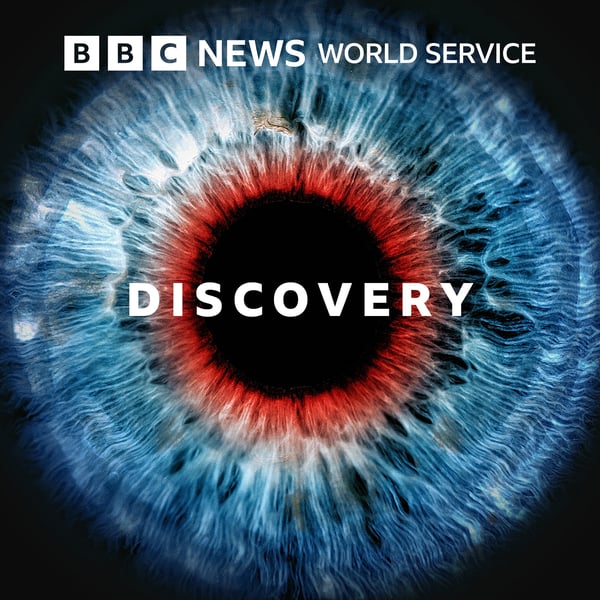Obsessed with the Quest: Humpback Heat Run
Discovery
BBC
4.3 • 1.2K Ratings
🗓️ 6 May 2024
⏱️ 27 minutes
🧾️ Download transcript
Summary
Underwater cameraman Roger Munns set himself and his team an incredible challenge. In 2008, they visited Tonga to film the biggest courtship ritual of the animal kingdom, the humpback heat run, for the very first time underwater and up close.
In the first few days, Roger had intimate encounters with the whales but most of the time, he was sat on the back of the boat, waiting to find a heat run. After two unsuccessful weeks, he started to wonder whether they would ever see one.
But a few days later somebody spotted a heat run, and everything sprang into action. Roger got in position and dove down ten meters underwater on a single breath. From then on, his job was just to wait and hold his camera ready. In a moment that seemed to stretch out time, he waited, nervously, for a group of 40-ton bus-sized whales to speed past him…
And Victor Vescovo describes his adventures into the deep, diving to the deepest parts of all five oceans.
Victor's longest dive was solo to the lowest point on Earth - the Challenger Deep at the bottom of the Marianas trench in the western Pacific. On reaching the bottom, some 35,853 feet below the ocean surface, should something have gone wrong, there was no hope of rescue.
Victor describes his feelings before making this historic descent and on the way down. Touching down on the sea bed, he was astounded by the abundance of marine life. Victor describes how he hopes that the mapping, observations and sample collections he has made on his dives will advance scientific understanding of the deep oceans, and where his eternal quest to explore might take him next.
Produced by Florian Bohr and Diane Hope
Credits:
Humpback whale mother and calf sounds - Acoustic Communications CNRS team & CETAMADA
Humpback whale calf sounds - Lars Bejder (MMRP Hawaii), Peter T. Madsen (Aarhus University) & Simone Videsen (Aarhus University)
Transcript
Click on a timestamp to play from that location
| 0:00.0 | Before you listen to this BBC podcast I'd like to introduce myself. |
| 0:03.4 | My name's Stevie Middleton and I'm a BBC commissioner for a load of sport |
| 0:07.4 | podcasts. I'm lucky to do that at the BBC because I get to work with |
| 0:10.7 | leading journalists, experienced pundits and the biggest |
| 0:13.2 | sports stars. Together we bring you untold stories and fascinating insights |
| 0:17.5 | straight from the player's mouths. But the best thing about doing this at the BBC is our unique access to the sporting world. |
| 0:24.4 | What that means is that we can bring you podcasts that create a real connection |
| 0:28.7 | to dedicated sports fans across the UK. |
| 0:31.1 | So if you like this podcast, head over to BBC Sounds where you'll find plenty more. My main safety concern when jumping in front of 10 charging 40-ton whales |
| 0:48.0 | was that what they do is they blow bubbles in each other's faces kind of bellowing threats at each other. |
| 0:54.8 | They'll breach out of the water onto the backs of other whales and males sometimes get killed |
| 1:01.1 | in the process. So I was sort of worried that they'd just be so intent on what they're doing, these violent acts to each other that I would just kind of be collateral damage. |
| 1:13.0 | My name is Roger Munz and I'm an underwater cameraman. |
| 1:18.0 | In 2008, I set off with a team from the BBC Natural History Unit to attempt to film one of the biggest |
| 1:27.2 | fights in nature. Multiple male humpback whales compete with each other to become the mate of a female humpback. |
| 1:37.2 | As far as I'm aware, no one had even attempted to film it for TV, so I definitely felt a huge sense of opportunity and also a lot of pressure |
| 1:47.0 | that I and we had to deliver kind of on the promise that we've made which was that we could film the Humpback Heat Run. So we landed in Tonga, and met with the rest of the team. Once we had our setup day we headed out north and south, left and right, looking around and it was early days and we were seeing Wales which was really encouraging to mother calf pairs, which we would get in and film, |
| 2:26.0 | and had some really beautiful interactions. When you have an encounter with a mother and a calf it's absolutely wonderful that the |
| 2:41.2 | mothers will hang often down at |
| 2:44.0 | sort of 10 15 20 meters they're exhausted they've been feeding their |
| 2:47.4 | calf with milk for days on end and they're not feeding so they're just hang |
| 2:52.1 | there like kind of huge mother ships. While the carves are the complete opposite just like any young child or animal they're playful they're like puppies. |
... |
Please login to see the full transcript.
Disclaimer: The podcast and artwork embedded on this page are from BBC, and are the property of its owner and not affiliated with or endorsed by Tapesearch.
Generated transcripts are the property of BBC and are distributed freely under the Fair Use doctrine. Transcripts generated by Tapesearch are not guaranteed to be accurate.
Copyright © Tapesearch 2025.

